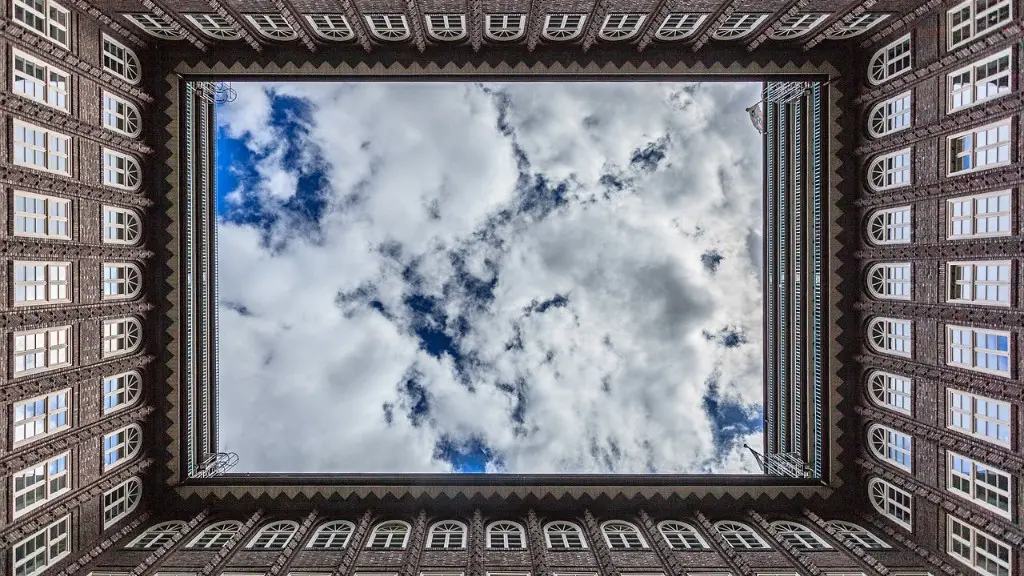Architecture plays an essential role in our lives. We may not realize it but the way our living spaces are designed can have a direct impact on our physical, emotional, and mental well-being. It is therefore of utmost importance that architecture is designed in a sustainable way.Sustainable architecture is about creating buildings and spaces that are more conscious of their impact on the environment and how they can benefit the surrounding community. It is not just about reducing energy consumption, but also finding smart and innovative ways to design buildings and spaces that will work in the long-term while making the most of the resources they have.
There are a lot of benefits to sustainable architecture, ranging from environmental to economic. From an environmental standpoint, sustainable architecture has the potential to reduce the amount of pollution created by the building process, reduce the demand for resources such as water and energy, as well as reduce air and water pollution. Furthermore, sustainable architecture can reduce the amount of waste produced by the building process and can also improve the health of occupants by introducing materials that emit fewer toxins and pollutants.
From an economic perspective, sustainable architecture has the potential to reduce costs associated with energy and water usage, maintenance, and building materials. Additionally, with the introduction of green building designs, the energy that is produced from the building can either be sold or used to generate electricity for the surrounding community. This can have a big impact on the local economy as it can provide local businesses with clean and affordable energy.
How To Implement Sustainable Architecture
There are a few ways to implement sustainable architecture. One way is through the use of renewable or green materials such as bamboo, cork, or recycled materials. Additionally, sustainable architecture can also be implemented through the use of passive strategies such as natural ventilation or solar orientation to reduce the need for air conditioning or heating.
Another way to implement sustainable architecture is through the thoughtful use of energy efficient materials and techniques. This could include the use of insulation to reduce heat loss, the use of double-glazed windows to reduce heat gain, or the use of solar panels to generate electricity.
Finally, the use of smart technologies can also be used in sustainable architecture. This includes the use of smart systems such as energy monitoring devices, light sensors, or automatic shut-off systems to ensure that energy is used only when needed.
Ecosystem Benefits of Sustainable Architecture
Sustainable architecture can have many positive impacts on the local ecosystem. By using green building designs, such as those that use renewable materials and energy efficient techniques, it can help to minimize environmental stresses on the ecosystem. This helps to preserve biodiversity and can even help to encourage the regeneration of local ecosystems.
Additionally, sustainable architecture can help to preserve water resources by reducing the demand for potable water. This is particularly important in areas where water resources are limited. Furthermore, green building designs can reduce the amount of energy and heat that is absorbed by the building, thus reducing the amount of water that is needed for cooling.
Finally, sustainable architecture can help to reduce air pollution. By reducing the demand for energy, sustainable architecture can reduce the amount of emissions created by burning fossil fuels for energy. This can even help to reduce smog and acid rain.
Social Benefits of Sustainable Architecture
Sustainable architecture can also be beneficial to local communities. By using green building designs, it can help to create healthier living environments. Utilizing natural ventilation, natural lighting, and better air purification methods can help to reduce air pollution and improve air quality. This can have a positive impact on the health of local residents.
Moreover, using green materials and technology can reduce the cost of maintenance and upkeep, thus providing local communities with more affordable housing options. Furthermore, using sustainable architecture can also help to provide local communities with clean and affordable energy. This can be particularly beneficial in the developing world, where environmental issues and access to resources can often be limited.
Additionally, the use of sustainable architecture can also have a positive impact on the local economy. By having buildings that generate renewable energy, it can provide local businesses with free or discounted electricity. This can help to attract more businesses to the area and can increase employment opportunities.
Economic Benefits of Sustainable Architecture
There are also economic benefits to sustainable architecture. In the short-term, green building designs can reduce the cost associated with building materials and the use of energy. Furthermore, buildings built with green building designs are often more energy efficient, thus reducing long-term energy costs.
In the long-term, investment in sustainable buildings can help to create new markets and stimulate economic activity. By using renewable energy or energy efficient technology, businesses can often save money and attract customers. Additionally, businesses that invest in green building designs may be eligible for tax breaks or other incentives.
Furthermore, using sustainable architecture can also help to attract investors. Businesses that invest in green building designs are often seen as being more responsible and are more trusted by potential investors. This can help to create a more secure and stable investment environment, which can ultimately lead to more economic growth.
Social Acceptance Of Sustainable Architecture
Sustainable architecture is becoming increasingly popular as more people become aware of its many benefits. Public opinion on the matter has shifted, and more people are starting to recognize the importance of investing in green building designs. This shift in attitude has enabled more businesses and local governments to invest in sustainable architecture, and the trend is likely to continue.
Furthermore, education initiatives have also played an important role in increasing the acceptance of sustainable architecture. More people are becoming aware of the potential benefits of investing in sustainability, and the increased education efforts are helping to create a more informed public. This may ultimately lead to more innovative and sustainable building designs.
Finally, there has also been an increase in investment in sustainable architecture in recent years. This is due to the potential long-term economic benefits as well as the potential to help reduce environmental impacts. This increased investment could help to make sustainable architecture more accessible to a wider range of people, thus helping to make sustainability a more common part of our lives.
Technological Challenges Of Sustainable Architecture
Although there are many potential benefits to sustainable architecture, there are also some technological challenges that need to be addressed. One of the most common challenges is that of cost. Even though green building designs can often be more energy efficient, they can also be more expensive upfront. This means that sustainable architecture may not be accessible to everyone, particularly in the developing world.
Furthermore, there is also the challenge of developing new technology that can help to make sustainable architecture more efficient. This includes the development of better insulation materials, more efficient heating and cooling systems, and more efficient lighting systems. Additionally, better data collection systems need to be developed in order to properly analyze and measure the energy efficiency of buildings.
Lastly, there is also the challenge of finding new ways to use renewable materials and energy sources. This could include the use of solar panels, wind turbines, or hydropower. Additionally, new renewable sources of energy such as geothermal and wave power may need to be developed in order for sustainable architecture to be truly effective.





